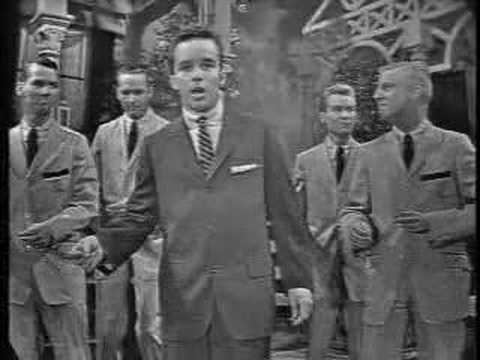8 /10 1 Votes8
First episode date 13 October 1957 | 8/10 IMDb Original language(s) English Running time 58 minutes Final episode date 13 October 1957 | |||||||||||||||||||||||||||||||||
 | ||||||||||||||||||||||||||||||||||
Starring Bing CrosbyFrank SinatraRosemary ClooneyLouis ArmstrongLindsay CrosbyThe Four PrepsBob Hope Nominations Primetime Emmy Award for Most Outstanding Single Program Of The Year Cast Similar Hemo the Magnificent, Our Mr Sun, Night, Foreign Intrigue, An Evening with Fred Astaire | ||||||||||||||||||||||||||||||||||
The edsel show cbs tv october 13 1957
The Edsel Show is an hour-long television special broadcast live on CBS in the United States on October 13, 1957, intended to promote Ford Motor Company's new Edsel cars. It was a milestone in Bing Crosby's career, and was notable as the first CBS entertainment program to be recorded on videotape, for rebroadcasting it in the western part of the country after the show was performed live for the east. Crosby arranged for this ‘live’ program to be ‘produced’ by his alma mater Gonzaga University in order that the profits (estimated at $250,000) could go to them in a tax efficient way. The program won the ‘Look’ magazine TV Award for ‘Best Musical Show’ and was nominated for an Emmy as the “Best Single Program of the Year”.
Contents
- The edsel show cbs tv october 13 1957
- The edsel show 1958
- Overview
- Soundtrack
- Reception
- Videotape
- In popular culture
- References
The edsel show 1958
Overview
The Edsel Show stars Bing Crosby and features Frank Sinatra, Rosemary Clooney, Louis Armstrong, and Lindsay Crosby performing with the Four Preps. It also features an appearance by a "mystery guest" who turned out to be Bob Hope. The show was directed by Seymour Berns, and was written and produced by Bill Morrow. The Orchestra was directed by Toots Camarata. Musical supervision by Buddy Cole with additional arrangements by John Scott Trotter.
The special replaced The Ed Sullivan Show, for the same sponsor, on CBS' Sunday lineup for one evening only, and was one of the year's most successful programs, although its popularity did not transfer to the Edsel cars.
The show has been credited as Bing Crosby's real television breakthrough, and set the pattern for his many television specials to come; in its wake he signed a lucrative contract with ABC under which he would produce two specials per year.
Soundtrack
Reception
Variety magazine was impressed. “The Edsel Show, a special kick-off for Ford’s new line of cars on tv, was a smooth, fast ride all the way. In fact, without even seeming to try, it shaped up as one of video’s top musical offerings, in the same class as the Mary Martin-Ethel Merman layout several years ago, on the ‘Ford Jubilee’ show. This time, it was the tandem of Bing Crosby and Frank Sinatra, two savvy pros who were at the top of their form. For Crosby, it was his best tv showing to date and for those who remember live radio way back when, Der Bingle generated the same easy charm that was responsible for his long-time run on the AM kilocycles...Crosby’s number with Armstrong and his combo on ‘Now You Has Jazz’ was a crackerjack getaway."
The show had a Trendex rating of 40.8. (A Trendex rating represents the percentage of TV homes in fifteen major cities, including New York, that are tuned to the program specified. Trendex telephoned 1000 homes during each half-hour period.)
Videotape
The show was performed at CBS Television City in the afternoon in California and broadcast live in the eastern part of the country. A videotape was made of the performance and was played back three hours later for western audiences. As videotape was a new technology, CBS made a film-based kinescope of the show and played it back alongside the videotape, so that the broadcast could switch to the kinescope if problems were encountered with the tape; there were none.
Videotape was a technology that had interested Crosby for several years, and his company Bing Crosby Enterprises had investigated several technologies, ultimately investing in Ampex, the first company to demonstrate a practical broadcast-quality videotape system when it unveiled the first 2" Quadruplex videotape machine in 1956. Crosby's interest as a performer was to avoid having to make repeated live performances of the same show, as he had originally done on radio.
In popular culture
In her autobiography, Girl Singer (Doubleday, 1999), Rosemary Clooney recalled an incident that happened the afternoon of The Edsel Show's telecast:
